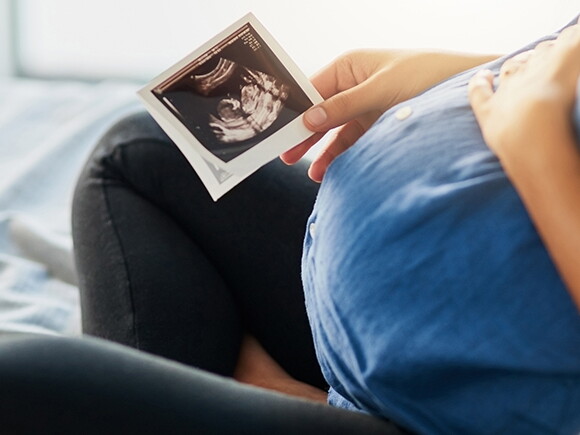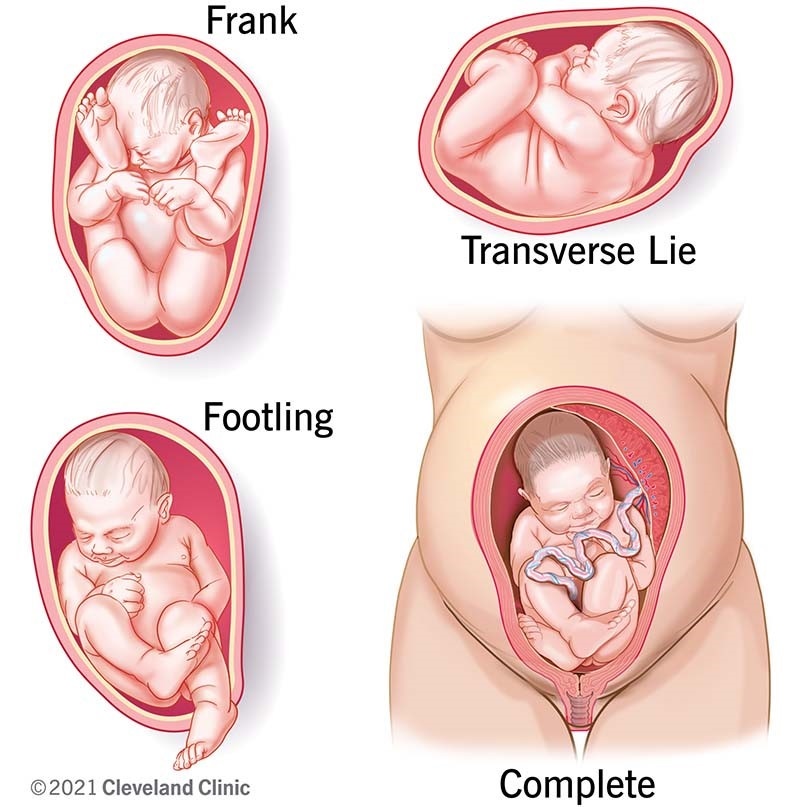
Managing a breech baby: what to do
Article
Jul 6, 2024
3 mins
What does ‘breech’ mean?1
- You're wondering what "breech" means? Well, when your baby is lying bottom-down in your uterus (womb), that's called the breech position.
- It's pretty common for babies to be in a breech position before 35 to 36 weeks of pregnancy.
- But don't worry, most babies turn to a head-down position before the last month of pregnancy.
- Only about 3 in every 100 babies are lying in a breech position at the end of pregnancy.
How can I tell if my baby is in the breech position?1
- During your check-ups in the second and third trimesters, your doctor or midwife will feel your abdomen to check your baby's position.
- At around 36 weeks, they'll check if your baby has settled into a head-down position in preparation for birth. If they suspect that your baby might be in a breech position, they can confirm this with an ultrasound scan.
What are the types of breech positions a baby can be in?2
Breech babies can present in several positions:
- Frank breech: The baby’s buttocks are aimed at the vaginal canal, with legs straight up in front of the body and feet near the head.
- Complete breech: The baby’s buttocks point downward, with both hips and knees flexed.
- Footling breech: One or both of the baby’s feet point downward and may deliver before the rest of the body.
- Transverse lie: The baby is positioned horizontally across the uterus, potentially leading with the shoulder during delivery.

Why might my baby be breech?3
- The reasons for breech positioning are not fully understood but could involve factors such as uterine abnormalities, multiple pregnancies, or placental location. This is typically identified during prenatal scans.
Do I need to worry if my baby is breech?3
- Having a breech baby doesn't usually indicate problems for you or your child. However, being head-down increases the likelihood of a vaginal birth. It's worth discussing your options with your healthcare provider if your baby is breech.
Can my baby still turn after 36 weeks?
- If you're wondering whether your baby can still turn after 36 weeks, some breech babies may turn naturally in the last month of pregnancy. However, this possibility decreases as time goes on.
Is there anything else I can do to make my baby turn?1
- In case your baby is still in a breech position at 36 weeks, you can consult your doctor or midwife about the external cephalic version (ECV) after 37 weeks.
- This procedure can help turn breech babies to the head-down position so that you can have a normal vaginal birth. However, not everyone is suitable for ECV, so it's important to talk to your doctor or midwife before considering this option.
- If you're looking for ways to encourage your baby to turn, you may have heard of certain positions, such as kneeling with your bottom in the air and your head and shoulders flat to the ground.
- You may also come across other techniques like acupuncture, a Chinese herb called moxibustion, and chiropractic treatment. However, there is no good evidence that these methods work. Therefore, before trying any of these techniques, it's best to check with your doctor or midwife if they might harm you or your baby.
What are my birth options if my baby is breech?1
- If your baby doesn't turn, you will have two options for birth: planning an elective cesarean birth or trying to have a vaginal breech birth.
Resources:
- Breech pregnancy. the Australian Government. Last reviewed: September 2022. Available at: https://www.pregnancybirthbaby.org.au/breech-pregnancy Last access at: 23.03.2024
- Breech Baby. Cleveland Clinic. Available at: https://my.clevelandclinic.org/health/diseases/21848-breech-baby Last access at: 23.03.2024
- Breech babies: what you need to know. NCT. Available at: https://www.nct.org.uk/labour-birth/different-types-birth/assisted-or-complicated-birth/breech-babies-what-you-need-know. Last access at: 23.03.2024

